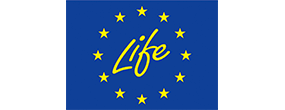Download pdf
Last update November 2025
EU refers to the EU27
Drivers of transport consumption
- At EU level, the energy consumption of transport decreased by 9.5 Mtoe between 2019 and 2023.
- Three factors contributed to lower consumption: a reduction in traffic of passenger and goods ("activity effect"), that contributed to decrease this consumption by 2 Mtoe (mostly due to passenger); energy savings (mostly due to more efficient trucks), that reduced consumption by 6.6 Mtoe; and other effects (3 Mtoe).
- These effects were partially counterbalanced by the modal shift, that contributed to an increase by 1.8 Mtoe (mainly due to an increase in road transport in the total freight traffic).
Drivers of energy consumption variation in transport at EU level (2019-2023)
- Between 2010 and 2019, the energy consumption of transport increased by 12 Mtoe at EU level.
- The rise in traffic in both freight and passenger contributed to increase this consumption by 23 Mtoe (50/50 contribution of passenger and freight) and "modal shift" by around 1 Mtoe (mainly due to an increase in road transport in the total freight traffic). Other effects, mainly behavioral effects, also contributed to increase the consumption (around 5 Mtoe) (decrease in load factor, driving behavior).
- Energy savings partially counterbalanced these effects, leading to a decrease by 17 Mtoe of transport energy consumption (equal contribution of passenger and freight).
Drivers of energy consumption variation in transport at EU level (2010-2019)







